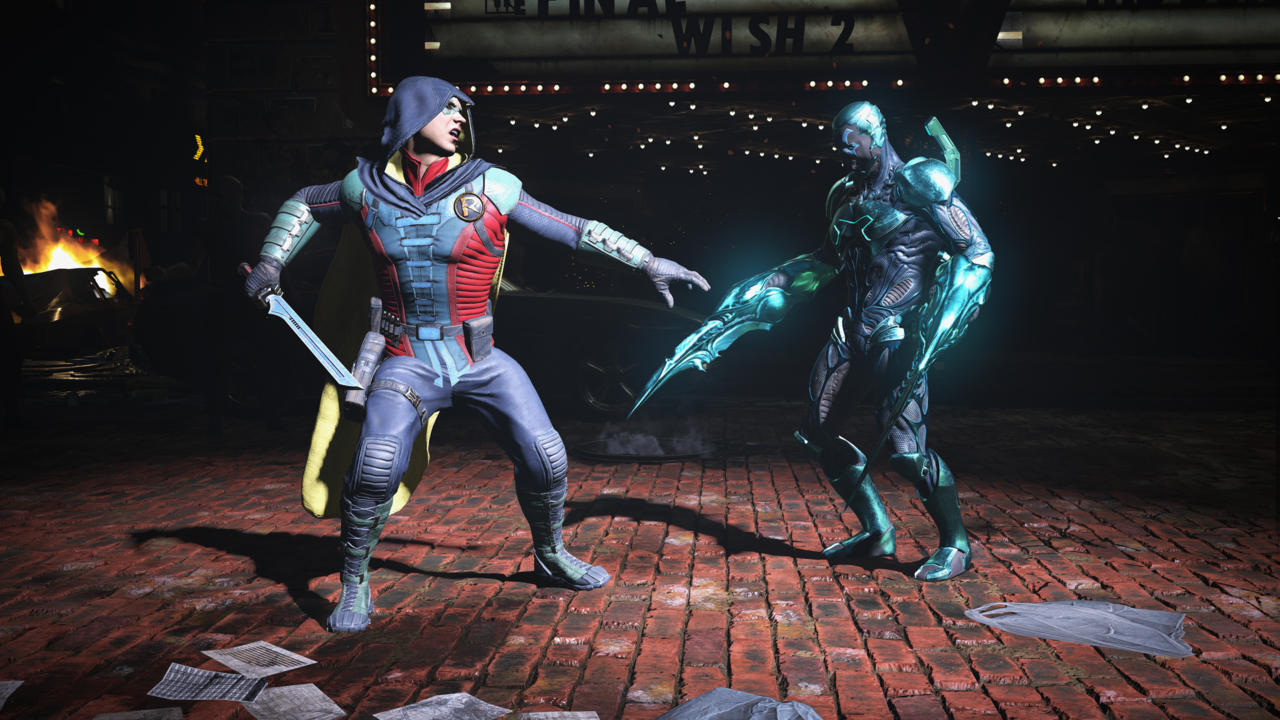Injustice 2: Mechanics And Terms Explained
Below you can find an in-depth glossary detailing the essential terms and mechanics in Injustice 2.
As a fighting game, Injustice 2 employs its own unique terminology to describe the myriad mechanics and situations you'll run into during a match. It also makes use of concepts that hardcore fighting game fans are likely to be familiar with. But for beginners to Injustice 2 and fighting games in general, a lot of this is bound to fly over your head. That's why we've compiled a list of all the game's terminology with accompanying definitions.
General Terms:

Below you can find definitions detailing the game's basic mechanics and concepts.
- Special Move: An attack move executed by performing a specific combination of directional inputs and button presses.
- Move Type: Signifies the area an attack lands on an opponent. There are three Move Types: High, Mid, and Low.
- Block Damage: The amount of damage an attack does to a guarding opponent.
- Overhead: An attack that must be blocked while standing.
- Juggle: Hitting a fighter who has been knocked into the air, allowing you to continue delivering attacks that are counted towards your combo counter.
- Cross Up: A jumping attack that hits behind the opponent. A successful Cross Up demands the other fighter block in the reverse direction to defend.
- Wakeup Attack: A Special Move performed immediately after being knocked down.
- Reversal Attack: A Special Move performed immediately after blocking.
- Block Escape: A maneuver that allows you interrupt an opponent's combo at the cost of one bar from your Super Meter.
- Air Escape: A maneuver that allows you recover mid-air from Juggle Combos at the cost of two bars from your Super Meter.
- Roll Escape: A special maneuver that gets you out of dangerous situations at the cost of one bar from your Super Meter.
- Delayed Getup: A maneuver that allows you stay on the ground longer to throw off your opponent's timing.
- Clash: A maneuver that allows you escape an attack or combo by drawing power from your Super Meter. It can only be used once per match, per character, after the second health bar is revealed.
- Meter Burn: This means the attack consumes a portion of your Super Meter for additional damage, properties, etc.
- Delay: This refers to an additional input that intentionally prolongs an attack from being thrown.
- Cancel (Move List Input): This refers to inputs that can stop an attack mid-animation.
Advanced Terms: Frame Data

Frame Data is a useful reference that allows you to better understand how to play Injustice 2. Each attack takes up a certain number of frames and has a beginning, middle, and end (i.e. a Start-Up, Active, and Recover). Frame Data reflects how many frames each segment of an attack takes.
Knowing the attack frames of your character's moves aids in your understanding of your own moves' limitations/advantages and how to counter an opponent's attacks. By looking at a move's Frame Data, you can calculate how an opponent's moves compare with yours to gain an advantage! For a quick rundown of the general terminology concerning Frame Data, refer to the definitions below.
- Start-Up: This represents how long the first active frame from an executed move takes to initiate.
- Active: This refers to the time that a move remains active until it fades or hits an opponent. In other words, it's the duration of time an attack registers as a hit.
- Recover: It's the amount of time it takes for an attack to return you to your neutral standing state. While an attack is recovering from use, you cannot block or cancel it.
- Block Advantage: This refers to whether or not you can move before an opponent after they block your attack. You can either be in positive advantage or negative advantage depending on the situation your attack was blocked.
- Hit Advantage: How much advantage you have to execute another move after hitting an opponent.
- Cancel (Frame Data): It's the advantage given to the attacker when they cancel their move with another move.
For more on Injustice 2, make sure to read our in-depth review. Otherwise, check out the news and features below.
- Injustice 2 Launch Trailer Highlights Customization, Supers, And More
- All The Injustice 2 Characters Confirmed (So Far)
- Who the Hell is Cheetah? Injustice 2 Character Backstory
- Injustice 2's First Tournaments Announced For PS4 Players Worldwide
Got a news tip or want to contact us directly? Email news@gamespot.com
Join the conversation